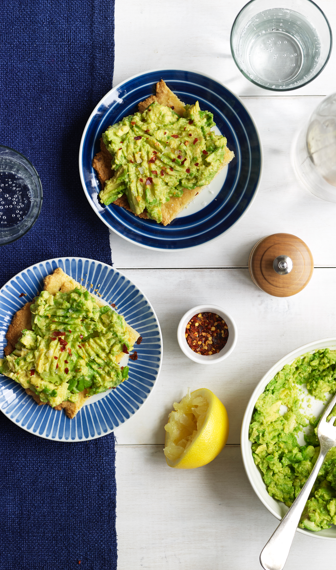Fat in general, is one of the three classes of foods called macronutrients (the others are protein and carbohydrates). All foods containing fat – even pure oils – contain a mixture of three kinds of fat – saturated, polyunsaturated and monosaturated. Learn more about how fat is the secret weapon to weight loss.
5 Frequently Asked Questions About Good Fats
What are good fats & bad fats?
Fats are commonly classified as good fats and bad fats. Good fats are all fats which are naturally found in foods; they are not heat processed, and are therefore not damaged. Especially important good fats are the essential omega-3’s, but any fat that’s normally found in food- like avocados, eggs, flaxseed, olives, coconut and nuts can be a good fat when consumed in a healthy diet.
Bad fats are damaged fats. They include oils that have been used and reused in frying. Bad fats are hydrogenated oils, also known as “trans-fats.”
Why do I need good fats?
Good fats are absolutely essential for human health. They provide the building blocks for many important hormones and structures in the human body. Omega-3 fatty acids are a great example of a healthy fat, as they are the building blocks of anti-inflammatory hormones.
Why should I avoid bad fats?
Bad fats or trans fats are often used in packaged goods such as chips, pretzels, cookies, fast food, shortenings and some margarine brands. They are even found in some brands of peanut butter. Because the body can’t break them down, trans fats (or bad fats) attach to the arteries and may result in plaque formation, which can be linked to heart disease, diabetes, breast cancer and asthma, as well as other illnesses.
How much good fat do I need?
Good question. Native hunter and gatherer societies have thrived on diets with a wide range of fat intake. Most experts suggest approximately 30% of calories as a dietary goal for good fats, which should come from a good mix of naturally occurring saturated, polyunsaturated and monounsaturated fats. The Atkins Nutritional Approach recommends higher levels of good fats during the first three weight-loss phases when carb consumption is lower. This higher recommended level of good fats is an integral component of the Atkins plan as it aids in weight loss and energy levels. The Lifetime Maintenance Phase recommends 30%-40% of calories coming from fat – however, the percentage will ultimately depend on your individual level of carb consumption.
How do I get good fats into my diet?
Fish such as salmon and sardines are an excellent source of omega-3 fats, as is flaxseed. Nuts (walnuts, almonds, pecans, macadamia nuts) all contain different mixes of good fats. Egg yolks contain a terrific mix of both saturated and unsaturated fat (as does beef). Coconut contains a particularly good form of fat known as MCT (medium chain triglycerides). And extra virgin olive oil is a rich source of healthy monounsaturated fat.
Our acceptable low carb foods list provides additional suggestions for fats and oils to consume.
On the other hand, many highly refined vegetable oils (corn, safflower, soybean) have had all the good stuff processed out of them and should be used sparingly if at all.
As you begin to become more health conscious of the different types of fats you are using to cook with, browse Atkins list of
healthiest cooking oils.
Register with Atkins today for low carb tips and recipes to jumpstart your weight loss journey.

